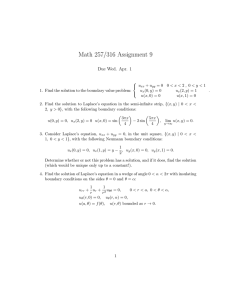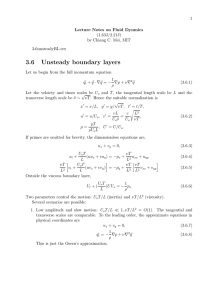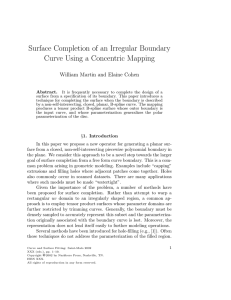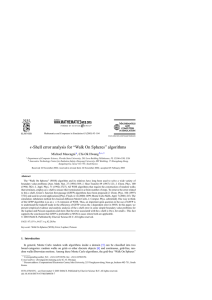Math 2280 - Lecture 43 Dylan Zwick Fall 2013
advertisement
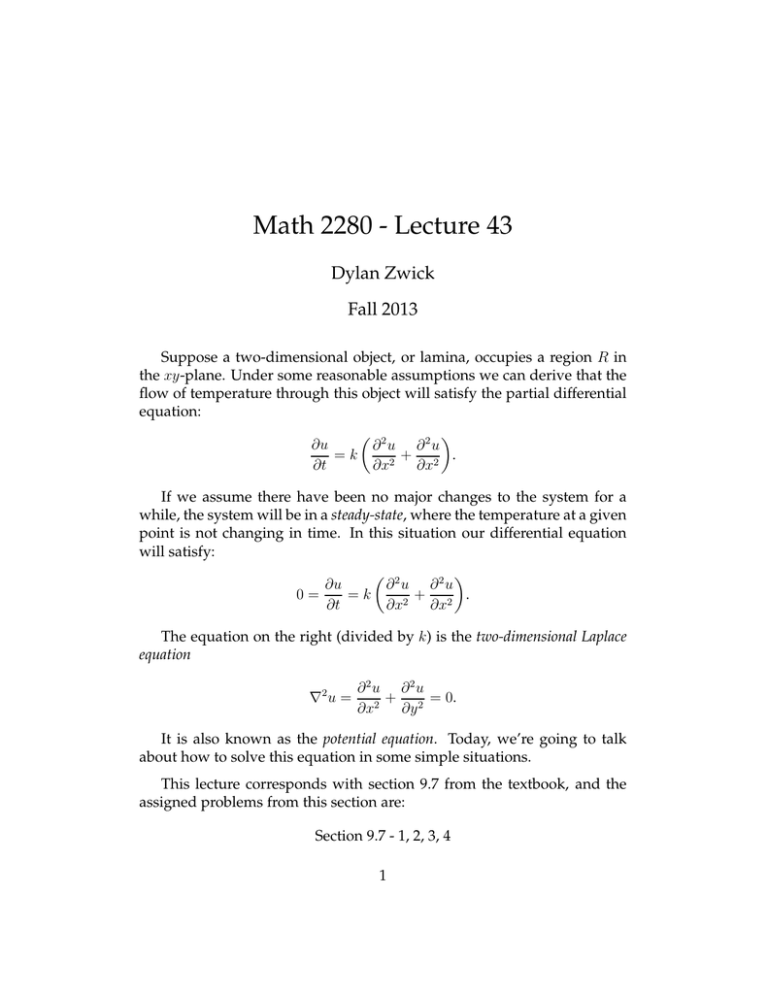
Math 2280 - Lecture 43 Dylan Zwick Fall 2013 Suppose a two-dimensional object, or lamina, occupies a region R in the xy-plane. Under some reasonable assumptions we can derive that the flow of temperature through this object will satisfy the partial differential equation: 2 ∂u ∂ u ∂2u =k + . ∂t ∂x2 ∂x2 If we assume there have been no major changes to the system for a while, the system will be in a steady-state, where the temperature at a given point is not changing in time. In this situation our differential equation will satisfy: 2 ∂ u ∂2u ∂u =k + . 0= ∂t ∂x2 ∂x2 The equation on the right (divided by k) is the two-dimensional Laplace equation ∂2u ∂2u ∇ u = 2 + 2 = 0. ∂x ∂y 2 It is also known as the potential equation. Today, we’re going to talk about how to solve this equation in some simple situations. This lecture corresponds with section 9.7 from the textbook, and the assigned problems from this section are: Section 9.7 - 1, 2, 3, 4 1 Dirichiet Problems Suppose we have a bounded plane region R whose boundary is a contin uous curve C: A Dirichiet problem is a problem that asks you to solve the Laplace equa tion in the region R given boundary values on the curve C: j2 dx + u(:c. --- dy y) = 0 within R; .f(’, ?J) on C. = If the boundary curve C and the boundary value function •f are rea sonably well behaved, then there exists a unique solutions to the Dirichlet problem. Note that “reasonably well behaved” is, of course, defined much more precise’y in more advanced classes where you’d actually prove this existence and uniqueness result, but here just know that for all the prob lems we’ll consider things are reasonably well behaved. 2 Dirichiet Problem in a Rectangle Example Solve the boundary value problem - r.r u(O, y) (o, b) = + j),J u(a, y) u(:i;, 0) u(z, h) = 0; (ti;). (q,b) L (c,y)O ( a) (o)E 3 () (J More room for the example problem. 4 Even MORE room for the example problem. 5 Example - Solve the boundary value problem uxx + uyy = 0; u(0, y) = u(a, y) = u(x, b) = 0; u(x, 0) = x. 6 Notes on Homework Problems As mentioned, the Dirichlet problem we solved is not as restricted as you might imagine, and to solve the problem in general for a rectangular region we’d combine four solutions, one for each side. The solution for one side is done as an example problem above. The solution for the other three sides are problems 9.7.1, 9.7.2, and 9.7.3. These are all very similar to the example problem. Problem 9.7.4 investigates a different type of boundary value problem, where instead of specifying the value of the function on all sides, on some sides the value of the function’s normal derivative (the derivative in the direction away from the region) is specified. A problem where derivatives are specified like this is called a Neumann boundary-value problem. Problem 9.7.4 investigates one such problem. 7

